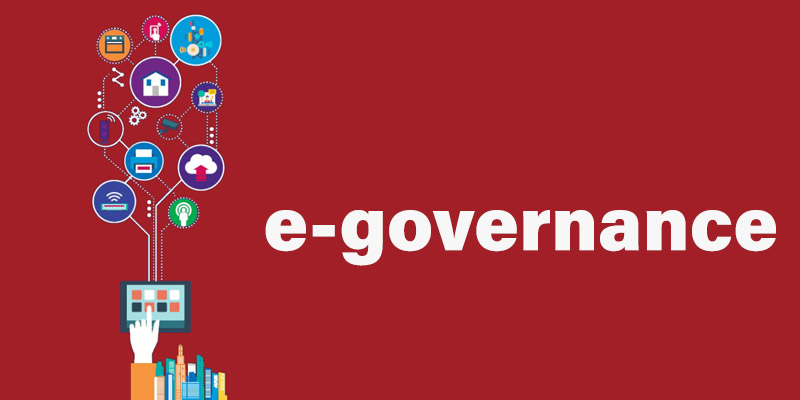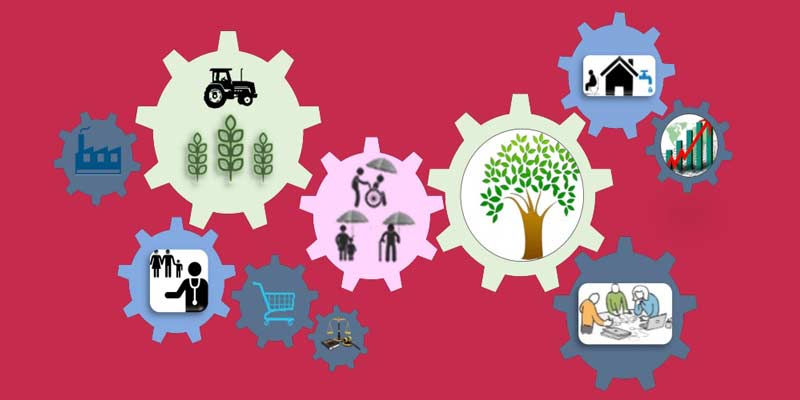- India
- Nov 22
Explainer / E-governance initiatives
• Union Minister of State for Personnel Jitendra Singh will inaugurate the 25th National Conference on e-governance (NCeG) in Jammu & Kashmir’s Katra on November 26.
• The two-day conference will be a platform for discussion on some of the digital innovations and technologies that will play an important part in the next decade for governance to transform India into a digitally empowered society and knowledge economy.
• The theme of this conference is “Bringing citizens, industry and government closer”.
• November 26 is celebrated as the Constitution Day to commemorate the adoption of the Constitution of India.
• The national awards for e-governance (NAeG) will be presented under five categories to 18 e-governance initiatives at central, state and district levels, academic and research institutions as well as public sector undertakings. This includes nine gold and nine silver awards.
What is e-governance?
• The “e” in e-governance stands for ‘electronic’. Thus, e-governance is basically associated with carrying out the functions and achieving the results of governance through the utilisation of Information and Communications Technology (ICT).
• The reason why countries around the world are increasingly opting for ‘e-governance’ is that governance per se has become more complex and varied in the last few decades and more importantly, citizens’ expectations from government have increased manifold.
• ICT facilitates efficient storing and retrieval of data, instantaneous transmission of information, processing information and data faster than the earlier manual systems, speeding up governmental processes, taking decisions expeditiously and judiciously, increasing transparency and enforcing accountability. It also helps in increasing the reach of the government.
• The emergence of ICT has provided means for faster and better communication, efficient storage, retrieval and processing of data and exchange and utilisation of information to its users — individuals, groups, businesses, organisations or governments.
UNESCO defines e-governance as:
Governance refers to the exercise of political, economic and administrative authority in the management of a country’s affairs, including citizens’ articulation of their interests and exercise of their legal rights and obligations. E-governance may be understood as the performance of this governance via the electronic medium in order to facilitate an efficient, speedy and transparent process of disseminating information to the public, and other agencies, and for performing government administration activities.
Basically, e-governance is generally understood as the use of ICT at all levels of the government in order to provide services to the citizens, interaction with business enterprises and communication and exchange of information between different agencies of the government in a speedy, convenient, efficient and transparent manner.
Advantages of e-governance
i) Fast, convenient and cost-effective service delivery: With the advent of e-service delivery, the government can provide information and services at lesser costs, in reduced time and with greater convenience.
ii) Transparency, accountability and reduced corruption: Dissemination of information through ICT increases transparency, ensures accountability and prevents corruption. An increased use of computers and web-based services improves the awareness levels of citizens about their rights and powers. It helps to reduce the discretionary powers of government officials and curtail corruption.
iii) Expanded reach of governance: Expansion of telephone network, rapid strides in mobile telephony, spread of Internet and strengthening of other communications infrastructure would facilitate delivery of number of public services.
iv) Empowering people through information: Increased accessibility to information has empowered the citizens and has enhanced their participation. With easy access to the government services, the faith of the citizens in the government increases and they come forward to share their views and feedback.
Various e-governance initiatives of the govt
• A large number of initiatives have been undertaken by various state governments and central ministries to usher in an era of e-government. Sustained efforts have been made at multiple levels to improve the delivery of public services and simplify the process of accessing them.
• The ministry of electronics and information technology (MeitY) launched the ‘Digital India’ programme with the vision to transform India into a digitally empowered society and knowledge-based economy by ensuring digital access, digital inclusion, digital empowerment and bridging the digital divide.
• Digital India has dramatically reduced distance between government and citizens significantly.
• It has also helped in delivery of substantial services directly to the beneficiary in a transparent and corruption free manner.
• Digital India is an umbrella programme that covers multiple projects of various central ministries/ departments and states/UTs.
Some of the major initiatives related to public service delivery are:
i) Common Services Centres: CSCs are offering government and business services in digital mode in rural areas through Village Level Entrepreneurs (VLEs). Over 400 digital services are being offered by these CSCs. Around 5.31 Lakh CSCs are functional (including urban & rural areas) across the country, out of which, 4.20 lakh CSCs are functional at Gram Panchayat-level.
ii) Unified Mobile Application for New-age Governance (UMANG): It is for providing government services to citizen through mobile. More than 1,570 government services and over 22,000 bill payment services are made available at UMANG.
iii) e-District Mission Mode Project (MMP): e-District project has been implemented at district and sub-district levels of all states/UTs, benefitting all citizens by delivering various e-services such as certificates (birth, caste, death, income and local resident), pension (old age, disability and widow), electoral, consumer court, revenue court, land record and services of various departments such as commercial tax, agriculture, labour, employment training & skill development, etc. Presently 4,671 e-services have been launched in 709 districts across India.
iv) DigiLocker: It is facilitating paperless availability of public documents. DigLocker has more than 11.7 crore users and more than 532 crore documents are made available through DigiLocker from 2,167 issuer organisations.
v) Unified Payment Interface (UPI): It is the leading digital payment platform. It is integrated with 330 banks and facilitated over 586 crore monthly transactions worth over Rs 10 lakh crore has been facilitated for the month of June 2022.
vi) CoWIN: It is an open platform for management of registration, appointment scheduling & managing vaccination certificates for COVID-19. More than 203 crore vaccination doses and 110 crore registrations have been facilitated by CoWIN.
vii) MyGov: It is a citizen engagement platform that is developed to facilitate participatory governance. More than 2.48 crore users are actively using MyGov.
viii) MeriPehchaan: National single sign-on platform called MeriPehchaan has been launched in July 2022 to facilitate / provide citizens ease of access to government portals.
ix) MyScheme: This platform has been launched in July 2022 to facilitate citizens to avail eligibility-based services.
x) Direct Benefit Transfers: As many as 315 schemes across 53 ministries are offering Aadhaar enabled direct benefit transfer to citizens. So far, Rs 24.3 lakh crore has been disbursed through DBT platform.
xi) DIKSHA: It is a national level educational platform that helps students and teachers to participate, contribute and leverage a common platform to achieve learning goals at scale for the country. As of July 2022, as many as 7,633 courses are available and more than 15 crore enrolments have been done.
xii) National Agriculture Market (e-NAM): The government has launched National Agriculture Market (e-NAM) Scheme with the objective of creating online transparent competitive bidding system to facilitate farmers with remunerative prices for their produce. More than 1.73 crore farmers and 2.26 lakh traders have been registered on e-NAM platform. Also, 1,000 mandis of 18 states and 3 UTs have been integrated with e-NAM platform.
xiii) mKISAN: The mKisan Portal (www.mkisan.gov.in) for sending advisories on various crop related matters to the registered farmers through SMSes. In mKISAN more than 5.13 crore farmers are registered for receiving crop advisories through SMS. More than 2,462 crore mobile based advisories have been sent to farmers to assist them in their farming activities.
xiv) One Stop Window-Farmers Portal (www.farmer.gov.in): It is for dissemination of information on various agricultural related matter including, seeds variety, storage godown, pests and plant diseases, best agricultural practices, watershed, mandi details, etc.
xv) Soil Health Card: It provides soil related information to facilitate farmers in farming activities. More than 22 crore soil health cards have been printed and dispatched to farmers.
xvi) Mobile based advisory system for agriculture & Horticulture (M4AGRI): It is a mobile based advisory system for agriculture and horticulture. It has been implemented in the northeast states namely Tripura, Mizoram, Manipur, Meghalaya, Sikkim and Arunachal Pradesh.
Manorama Yearbook app is now available on Google Play Store and iOS App Store


